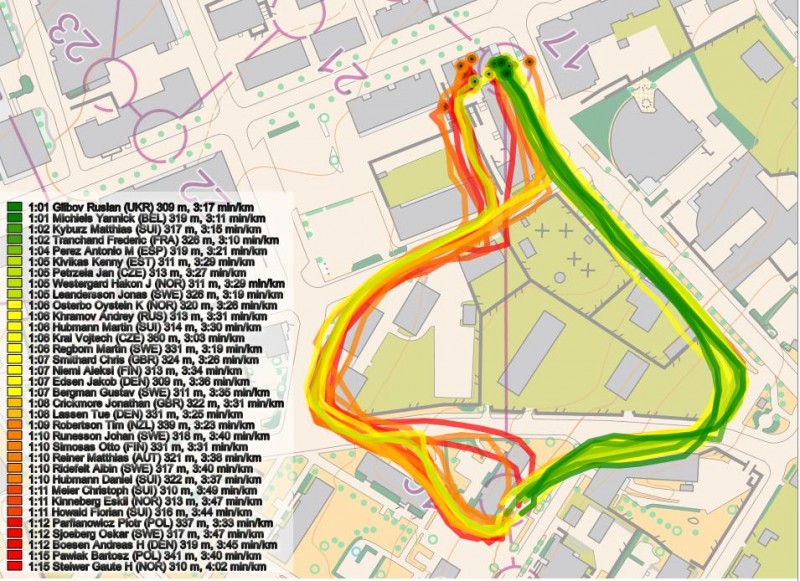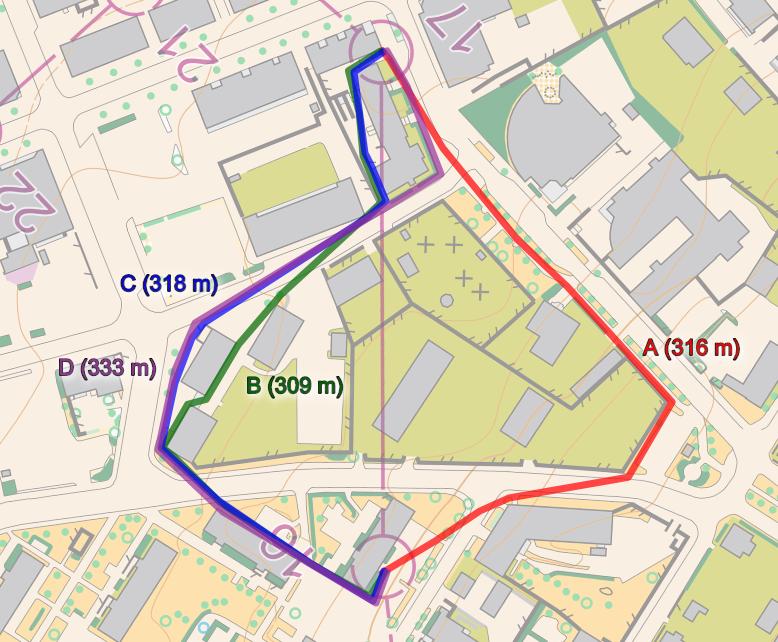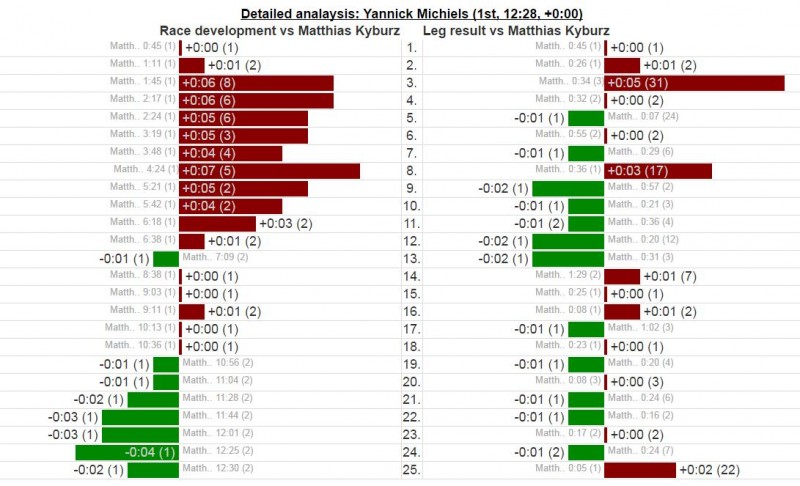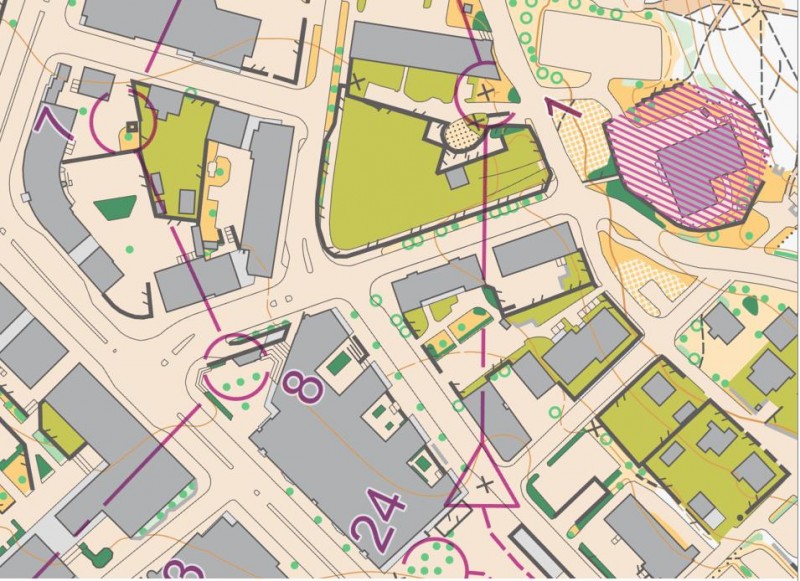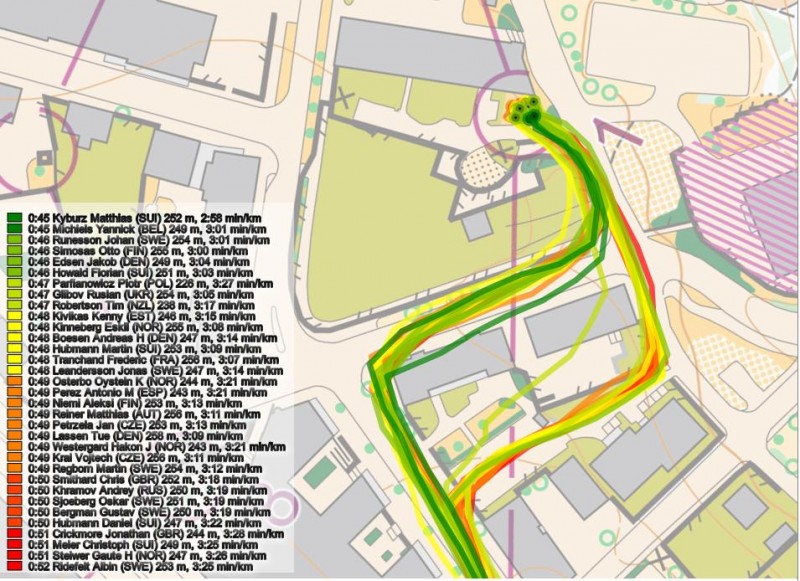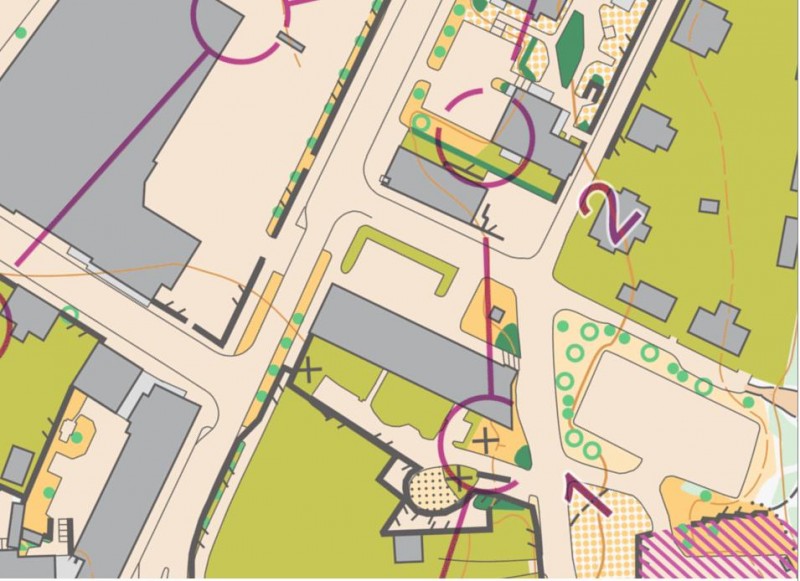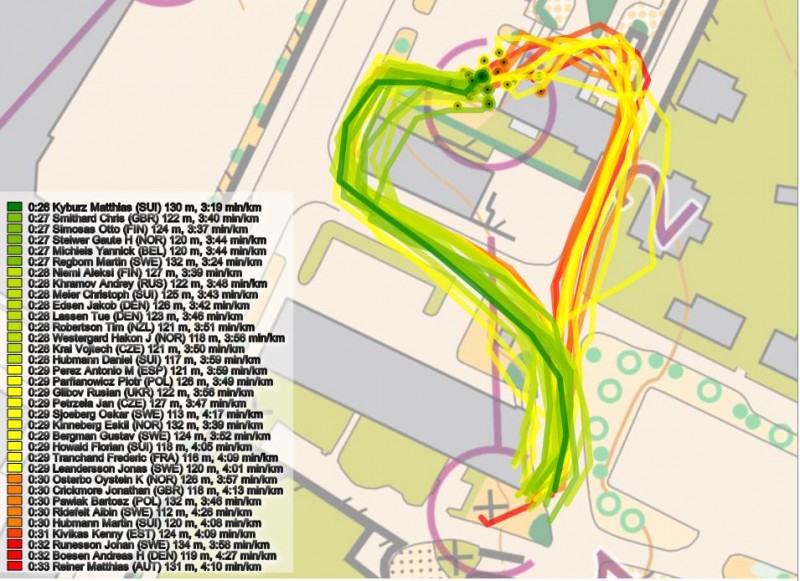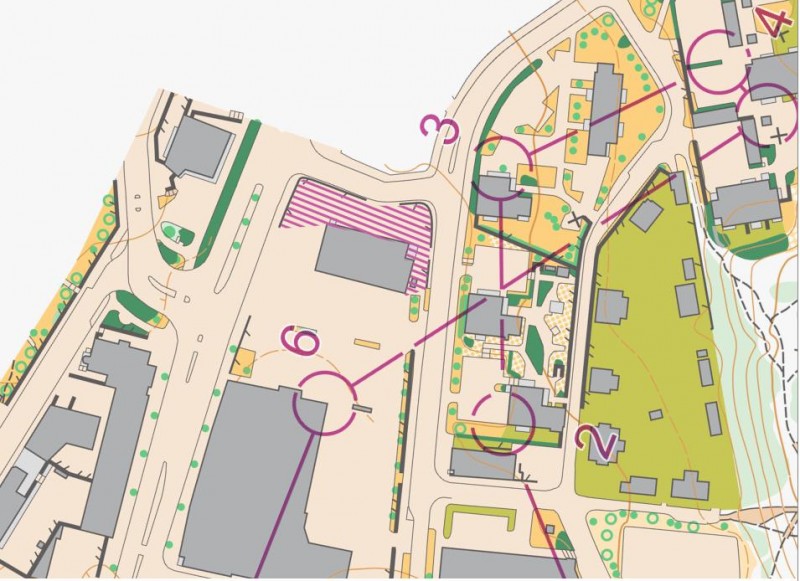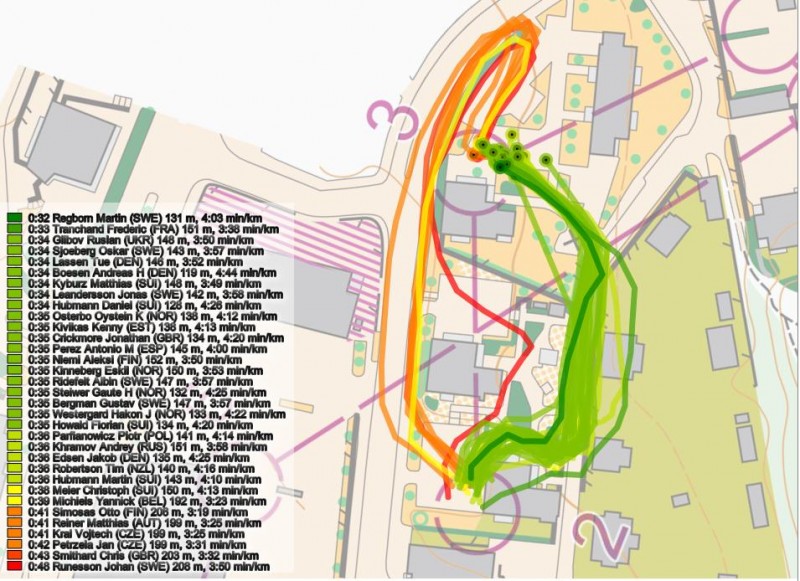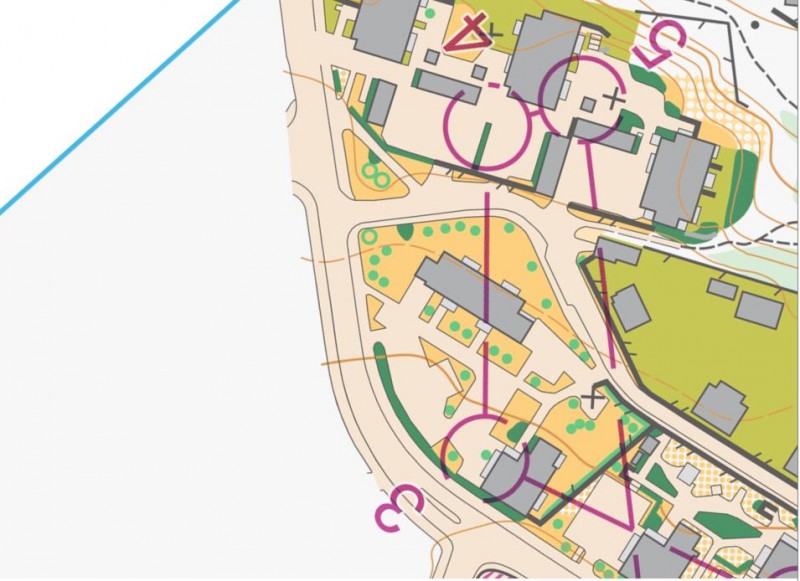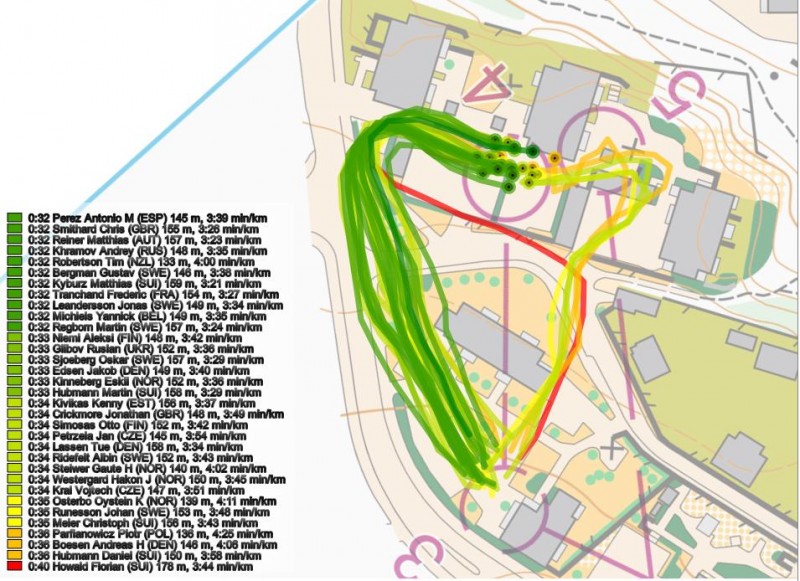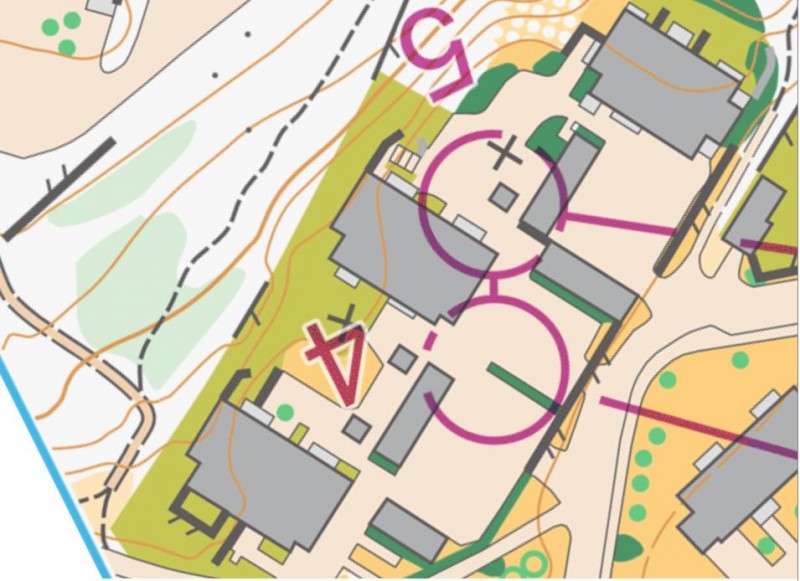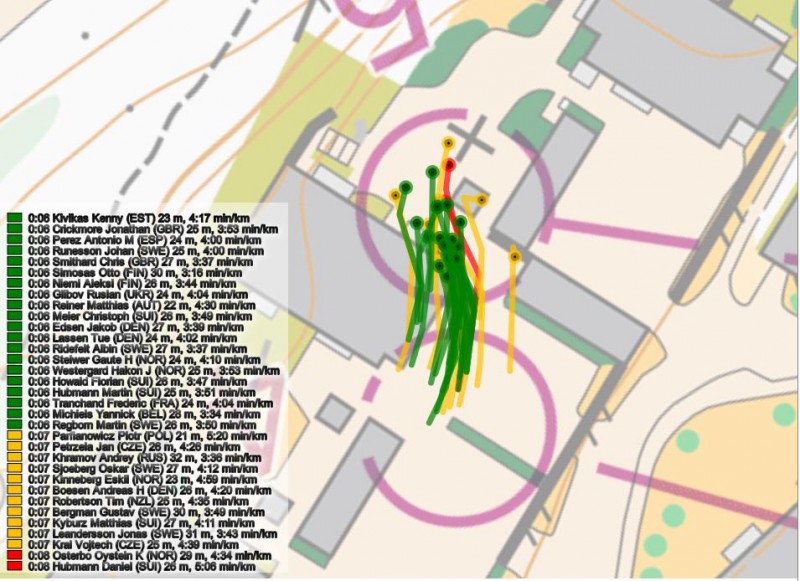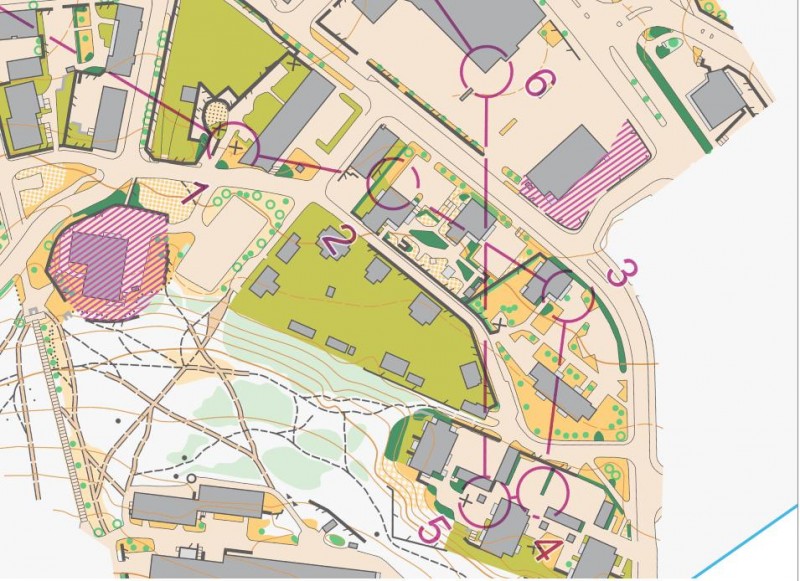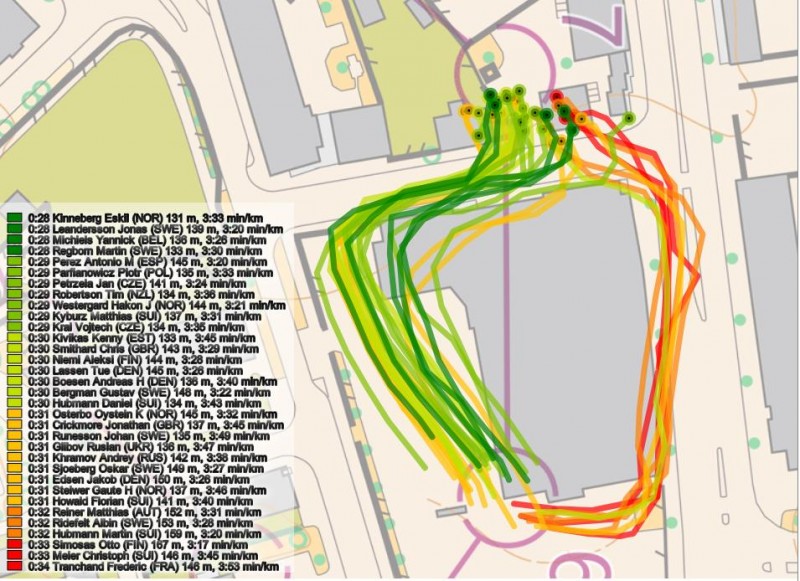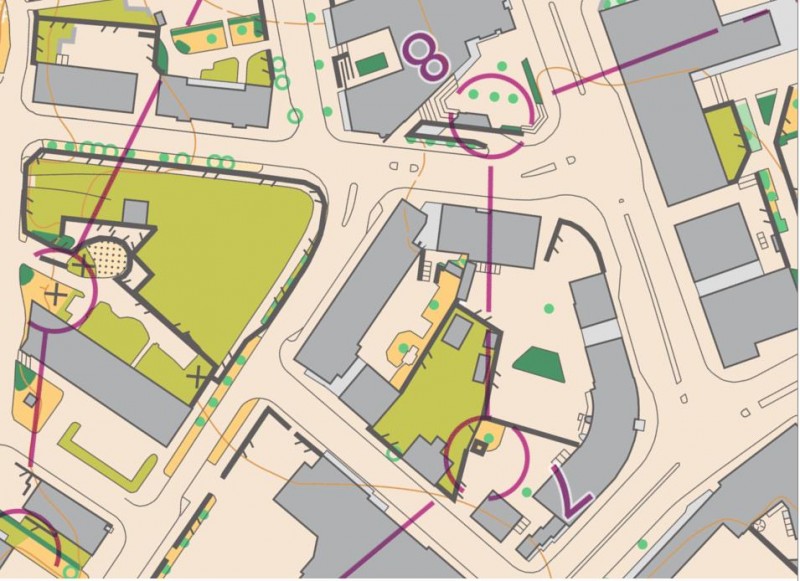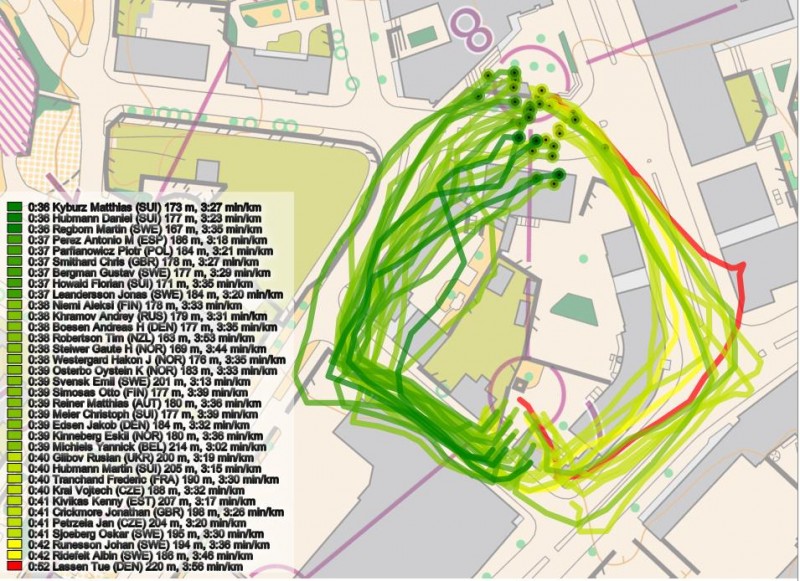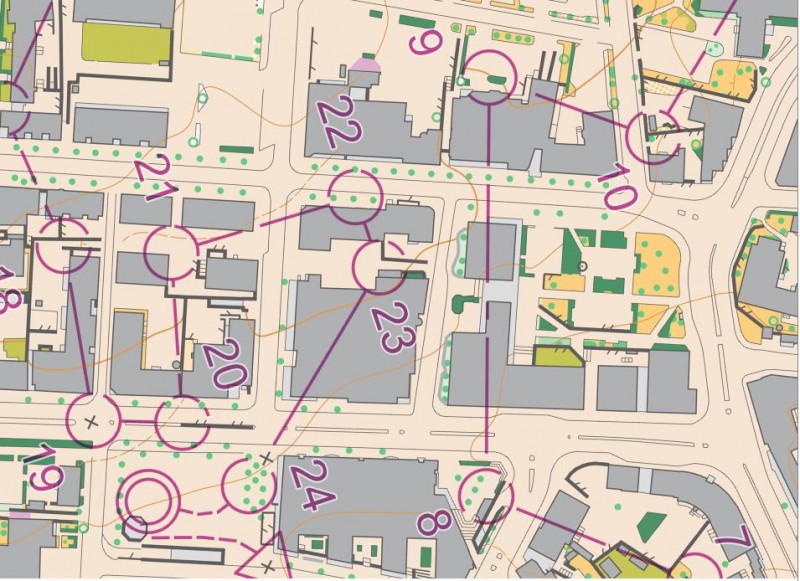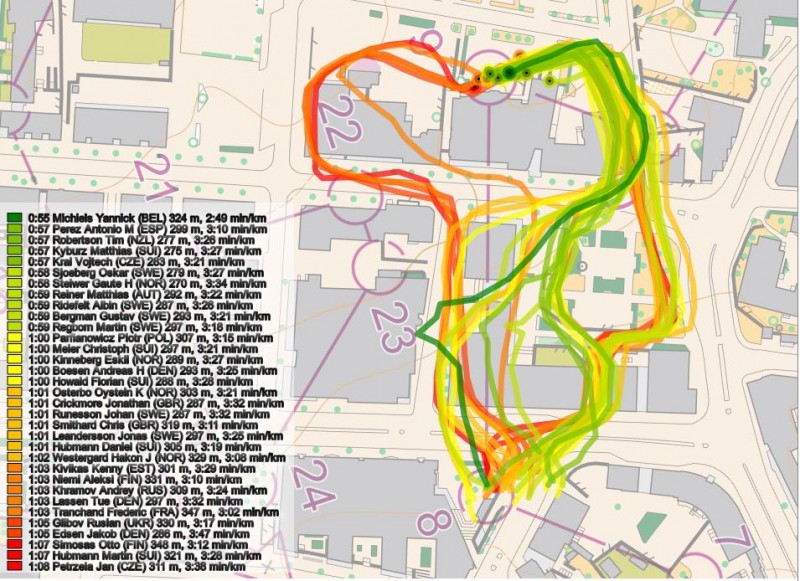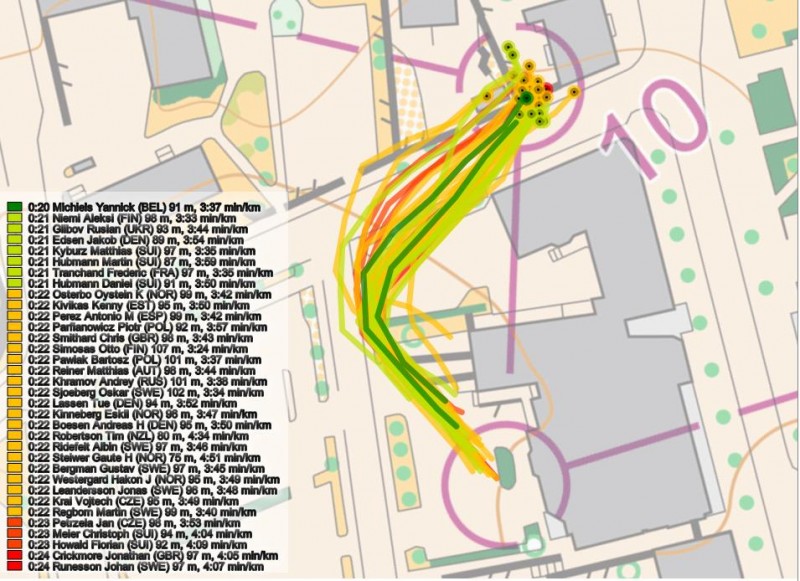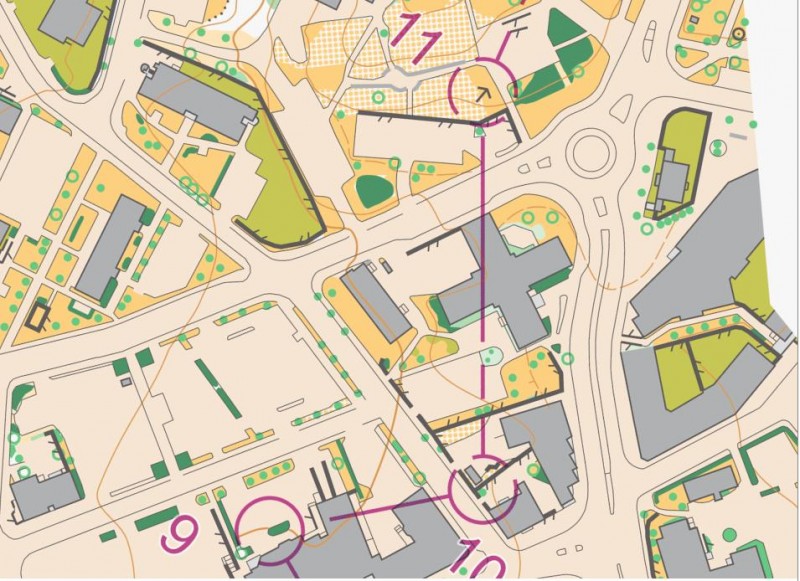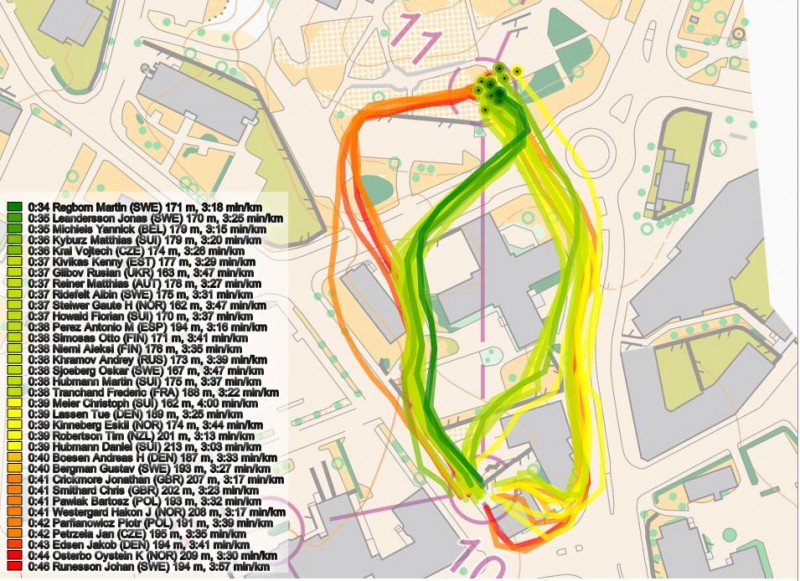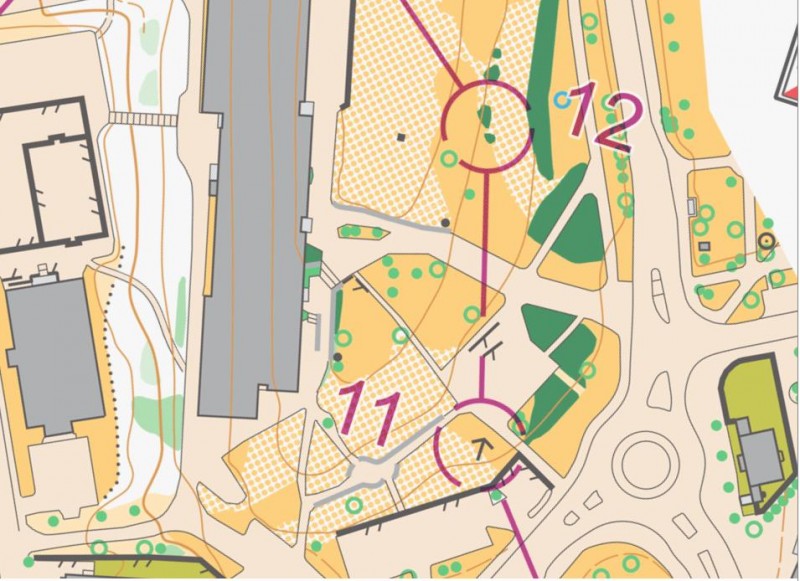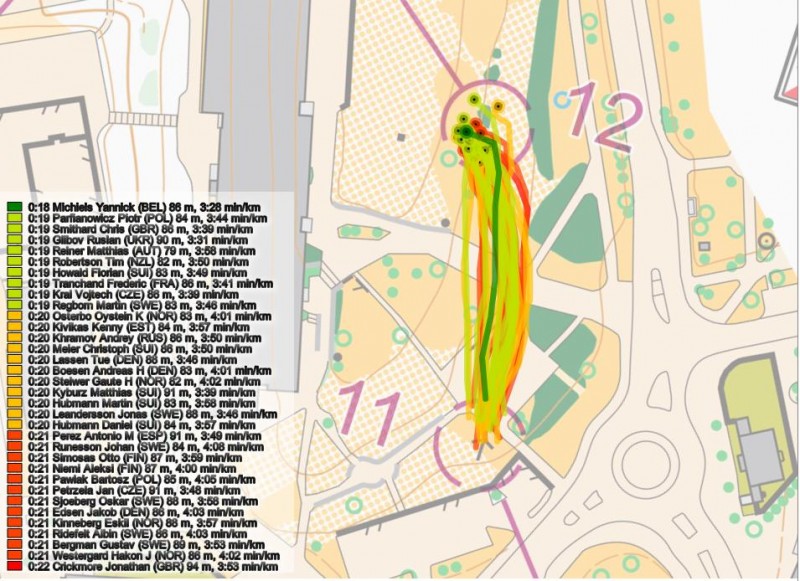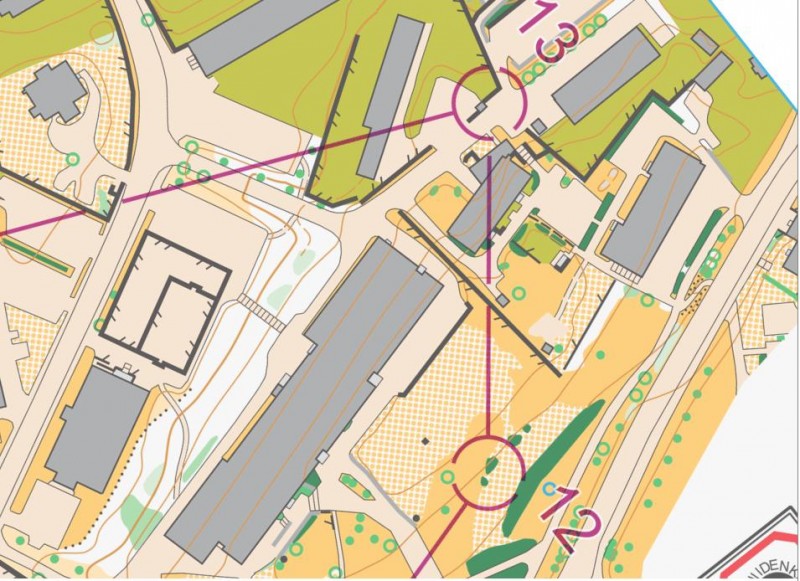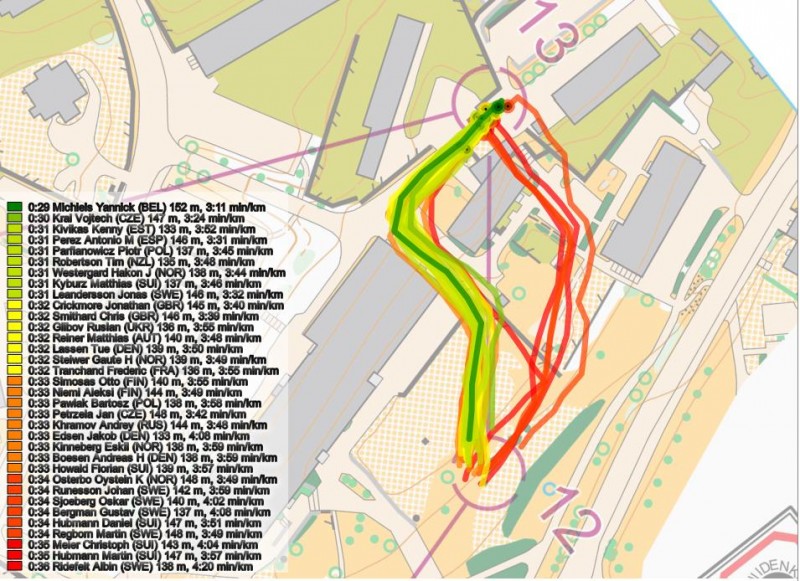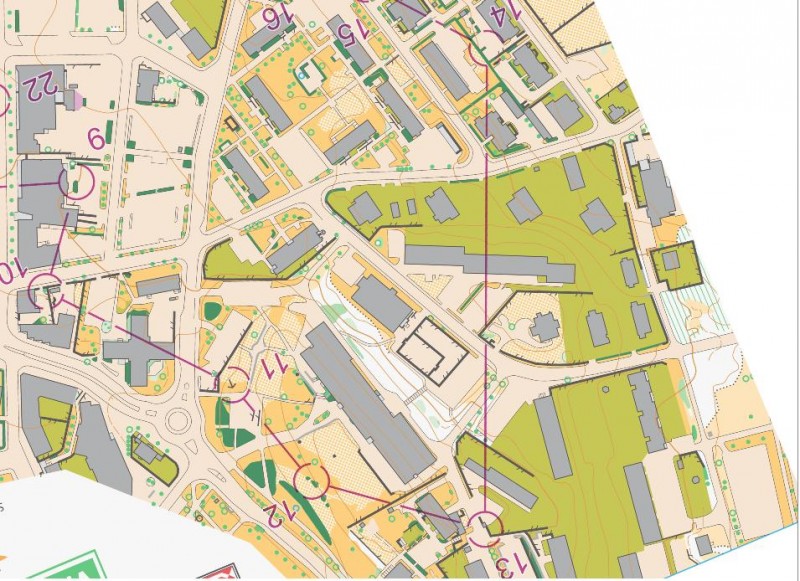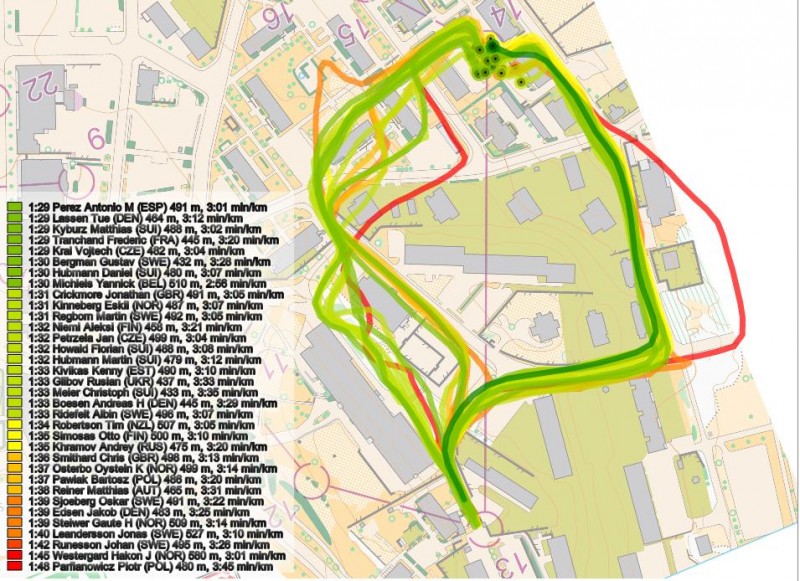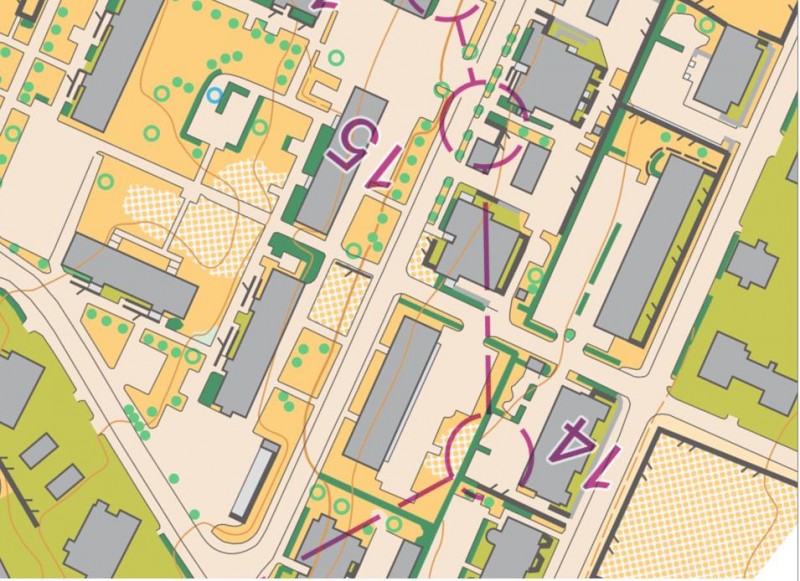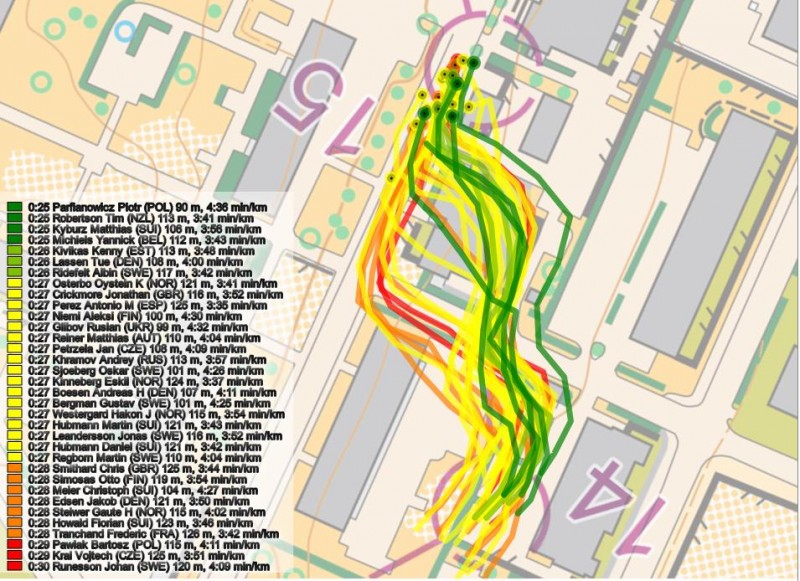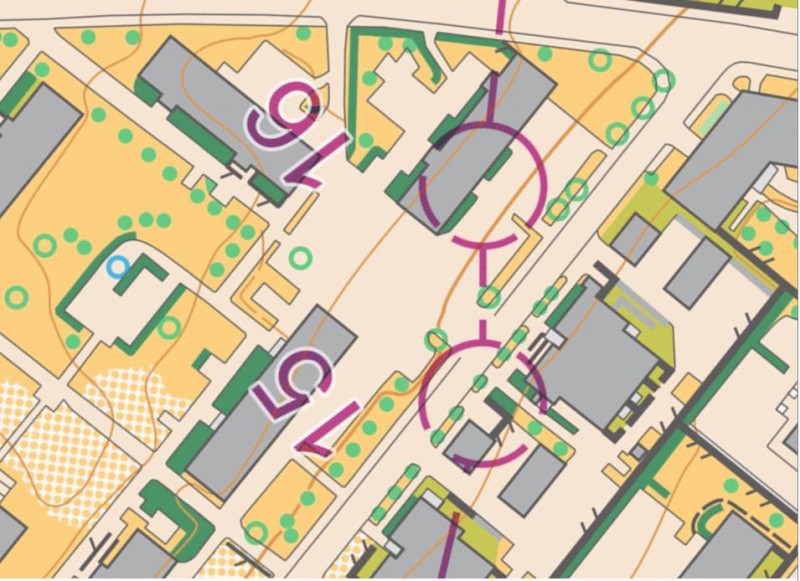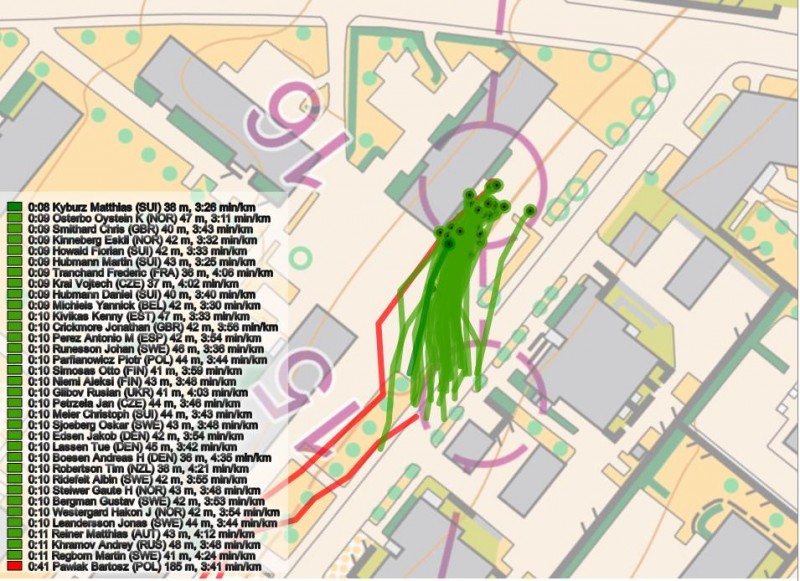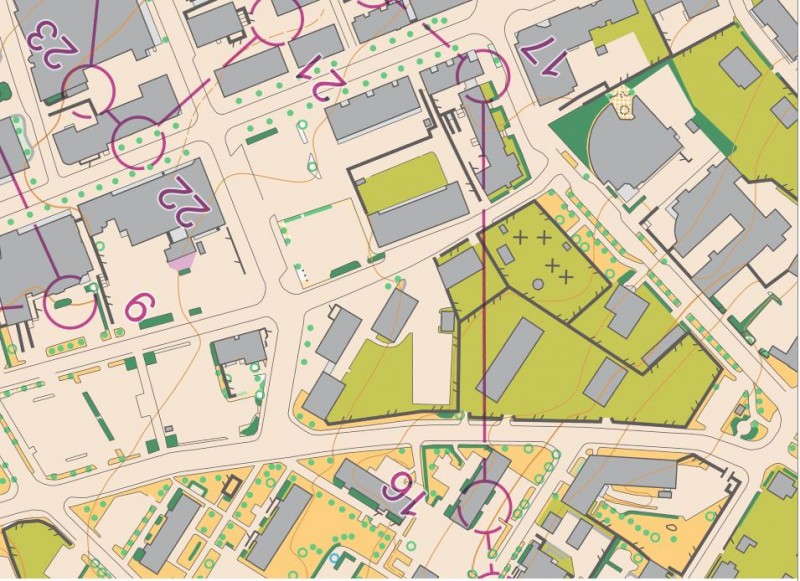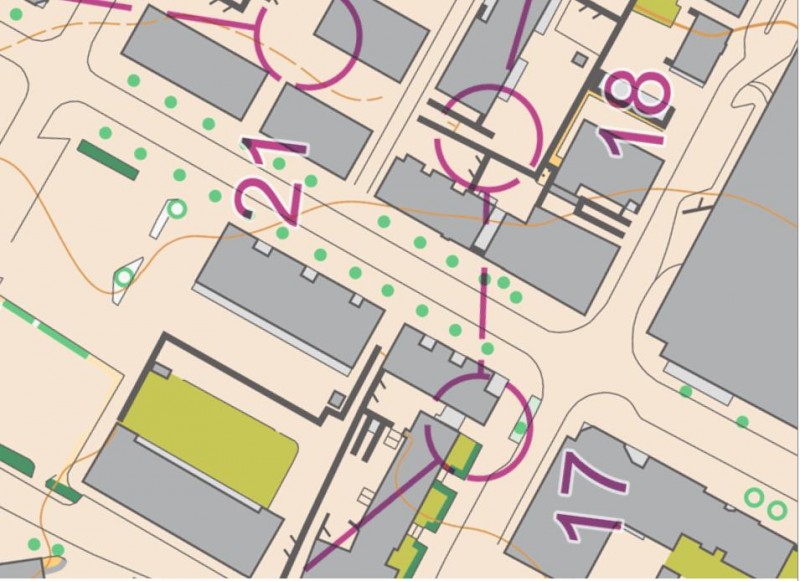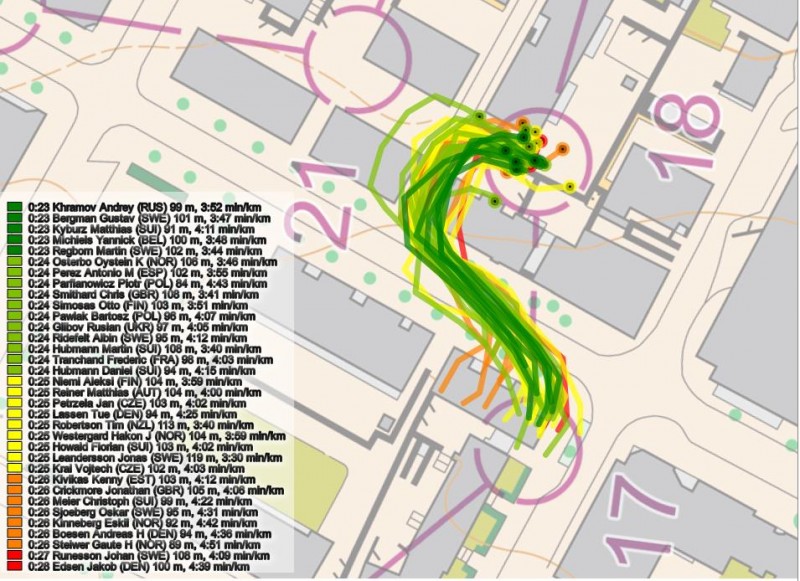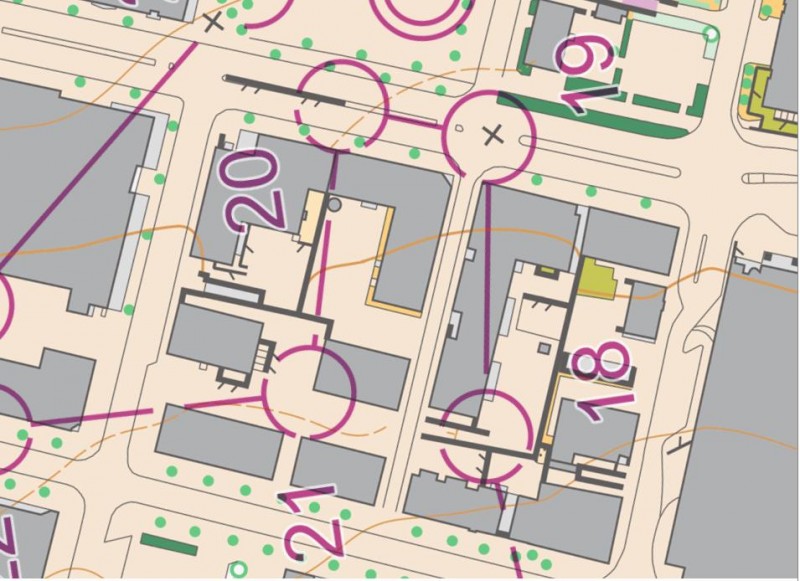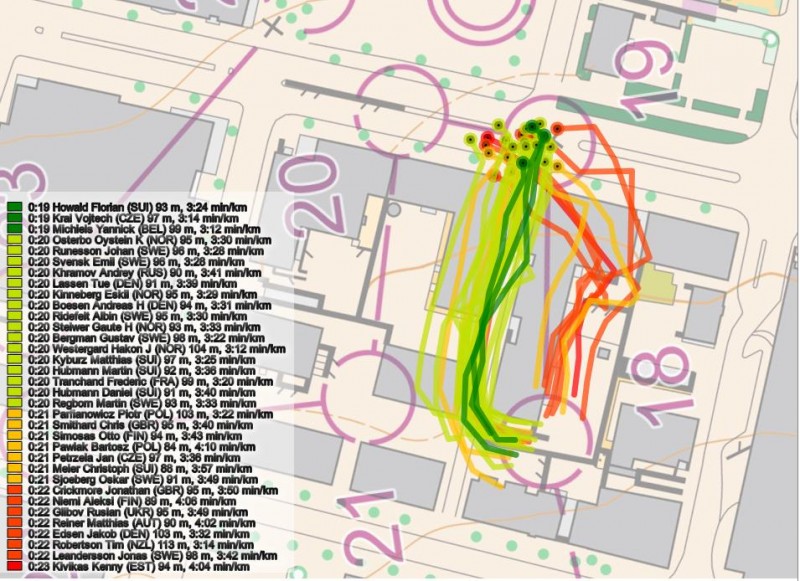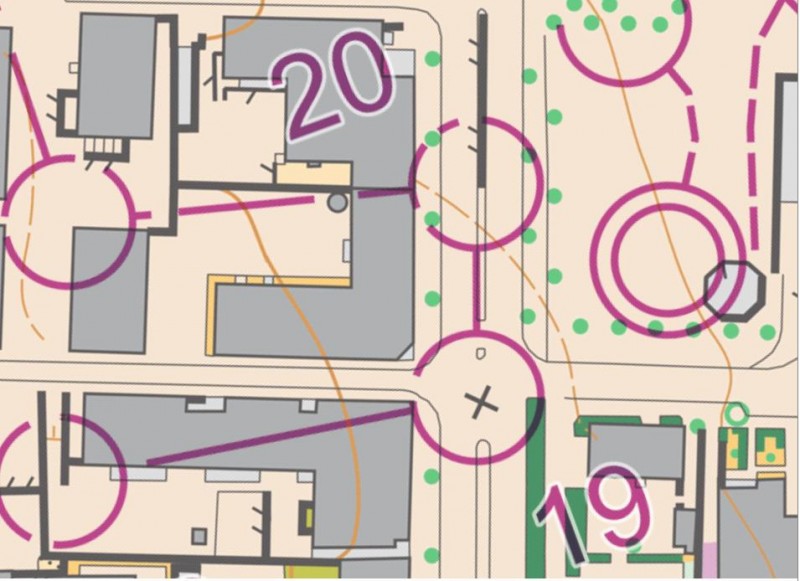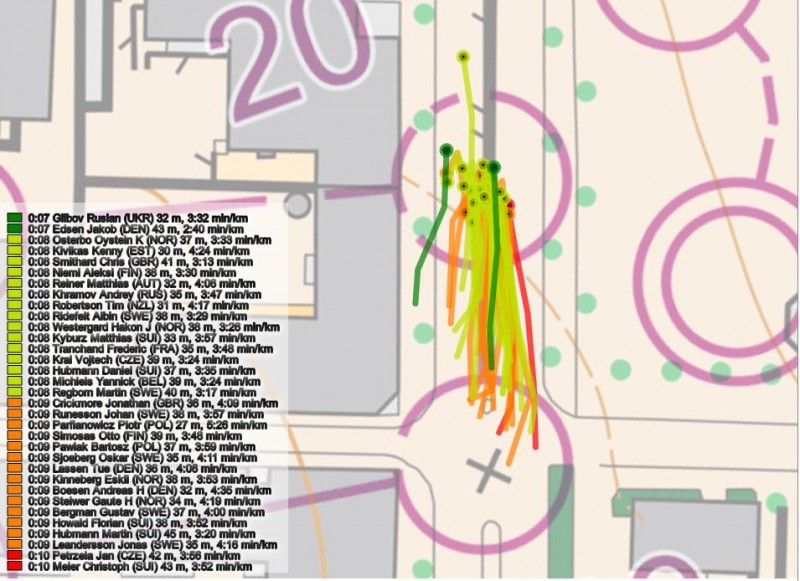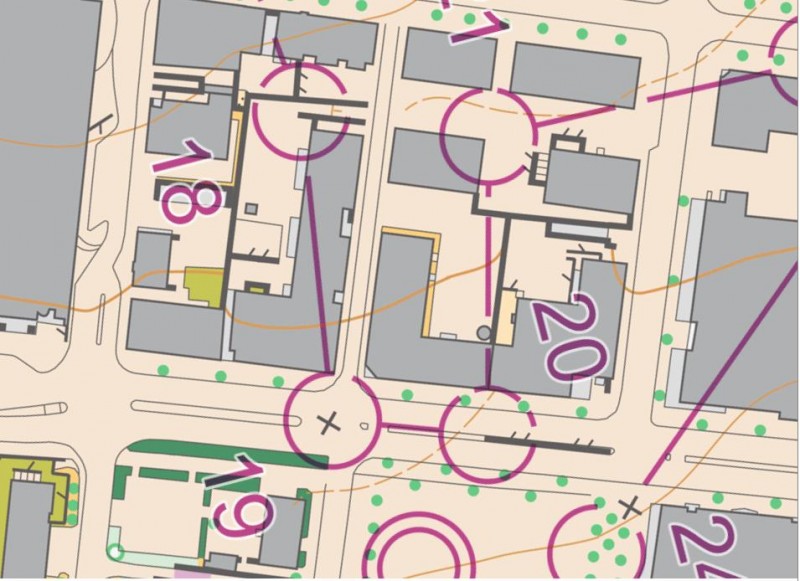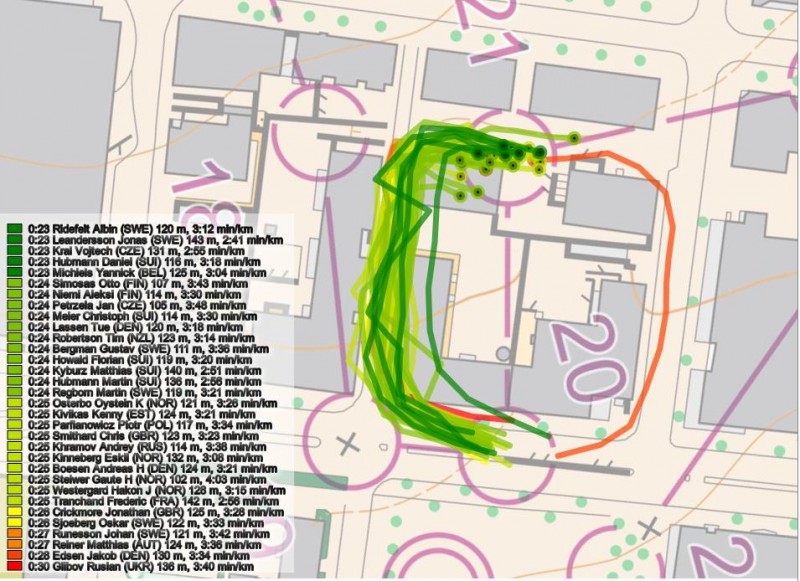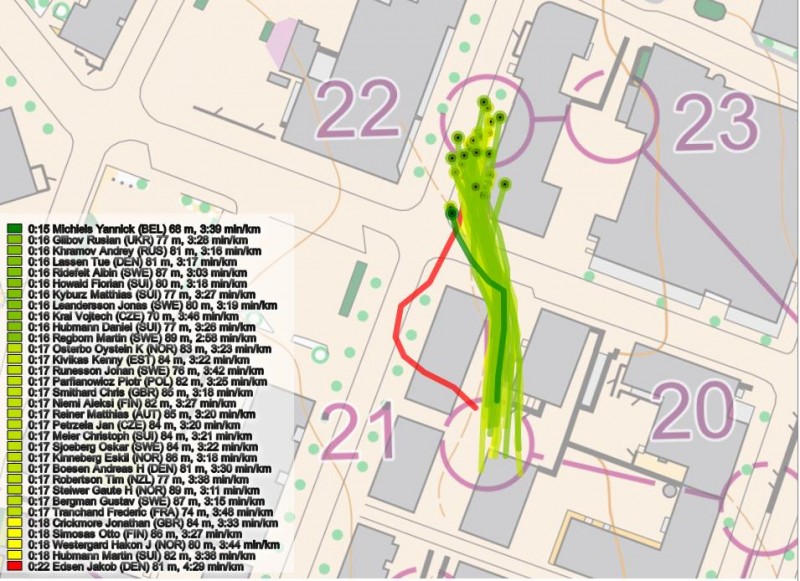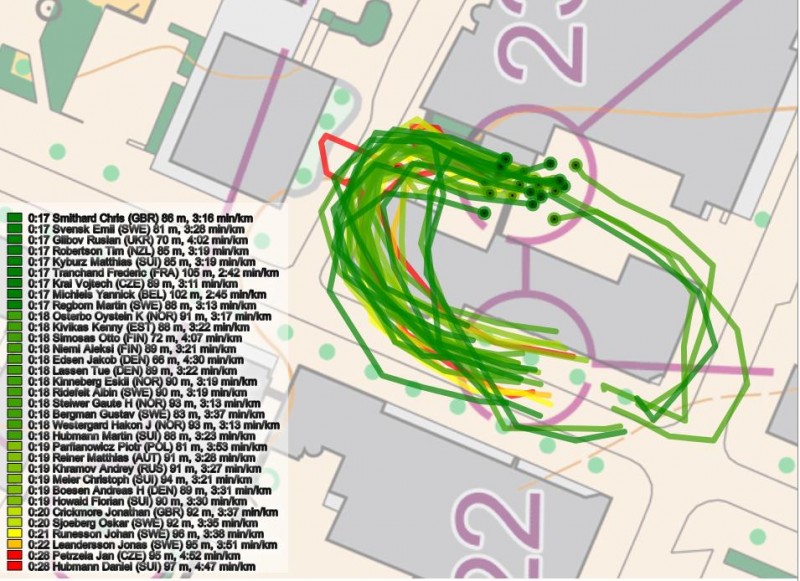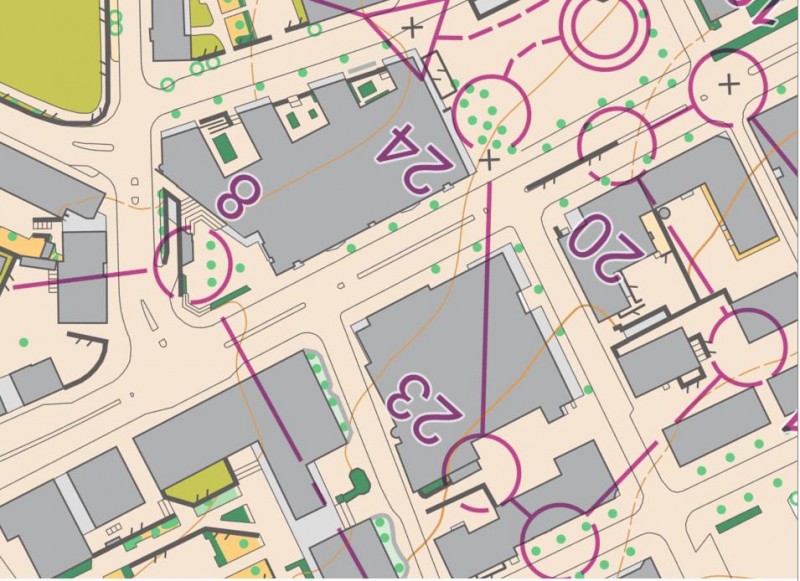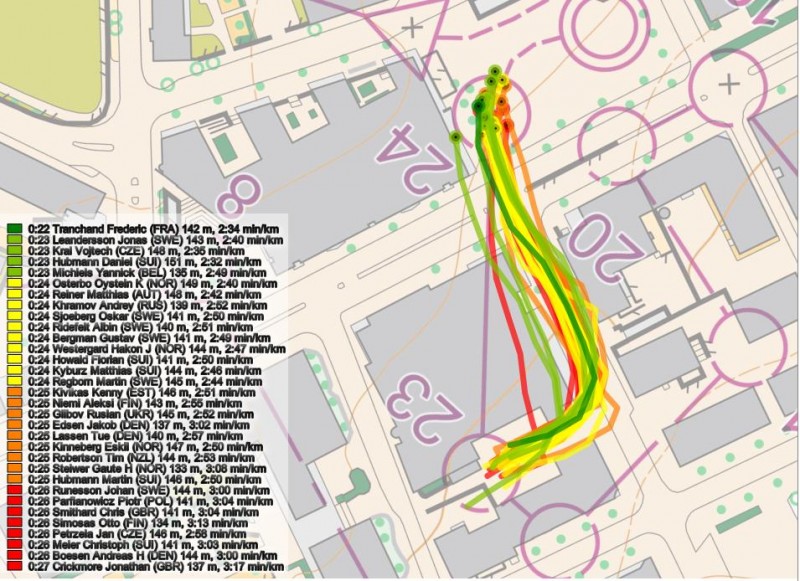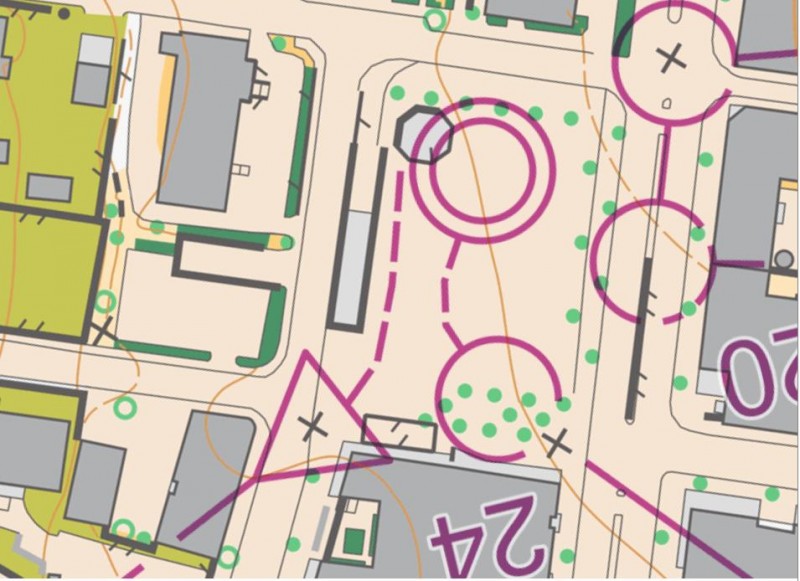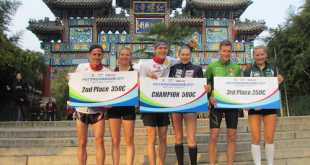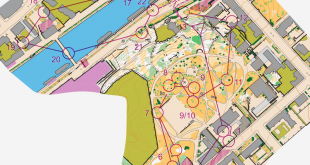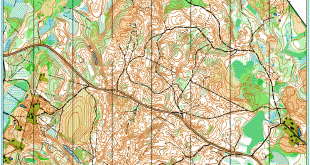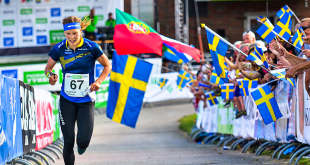The nice course at the World Cup Sprint in Lohja (Finland) deserves some analysis. There were several legs were significant parts of the field took a slower choice as you can see in the leg-by-leg GPS-analysis below. An excellent example of how a good modern sprint course can be made in flat terrain.
Green means fast – red means slow. An example of one of the most decisive legs is shown above – the leg to the 17th control. Looking at this specific leg, you lose 6-8 seconds by running left – even though the length difference is marginal. The reason for the time loss must lie in the extra corners and more complex running.
Here is also a comparison Kyburz vs Michiels (from official split times):
Michiels goes into two of the course setters traps – to the third control were he loses around 5-6 seconds due to routechoice and to the 8th control were he loses 3-4 seconds due to routechoice. His speed is however slightly higher than Kyburz’s, giving him the victory in the end.
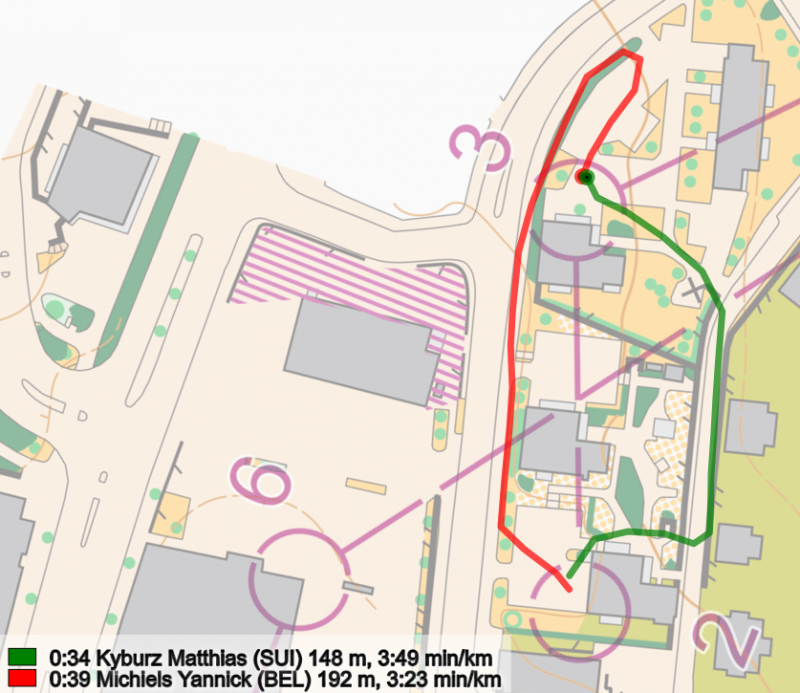
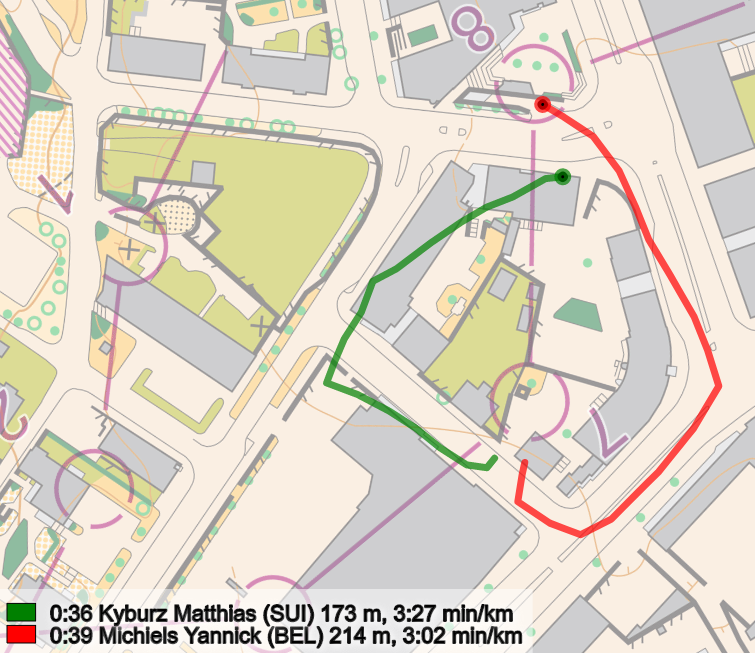
Here is also a splits comparison of the top athletes. Kyburz and Michiels are in a separate league:
Leg-by-leg routes
Below routes for all legs in the men’s course are shown with routes with correct split times. Split times shown are official split times (note that there are some entries in the split times which are not correct, these are not included in the analysis below). No full analysis is provided, but these illustrations should provide good training in understanding the challenges in modern sprint courses.
 World of O News
World of O News
